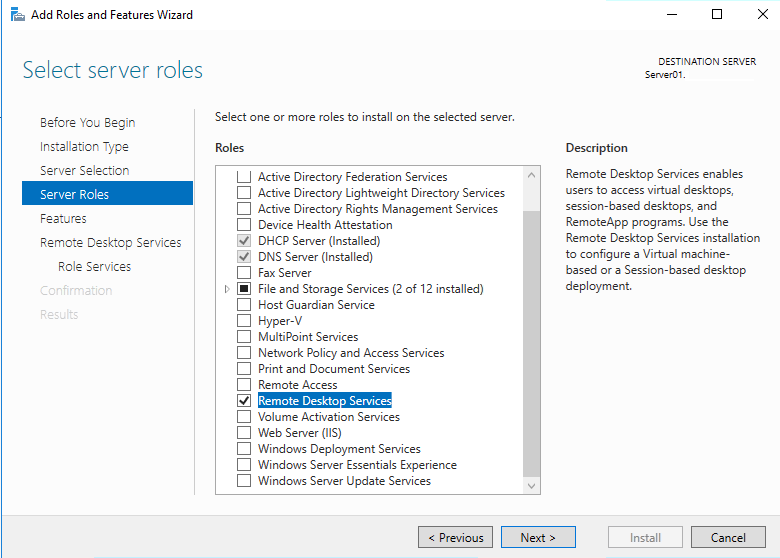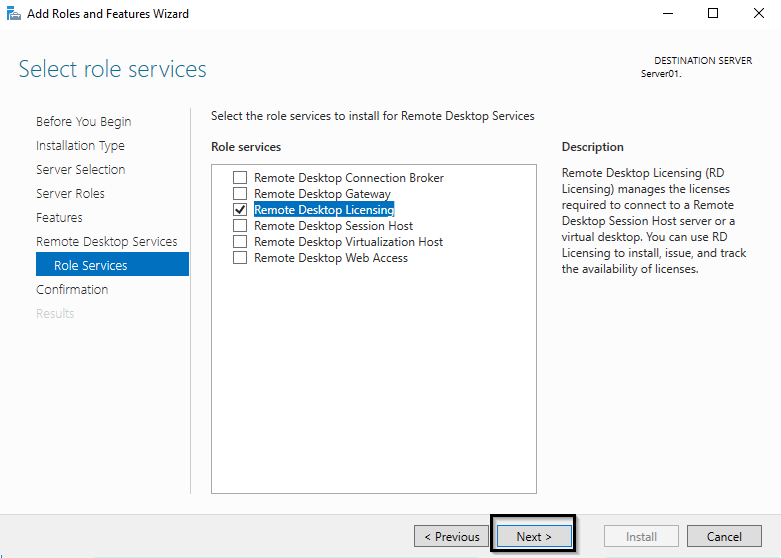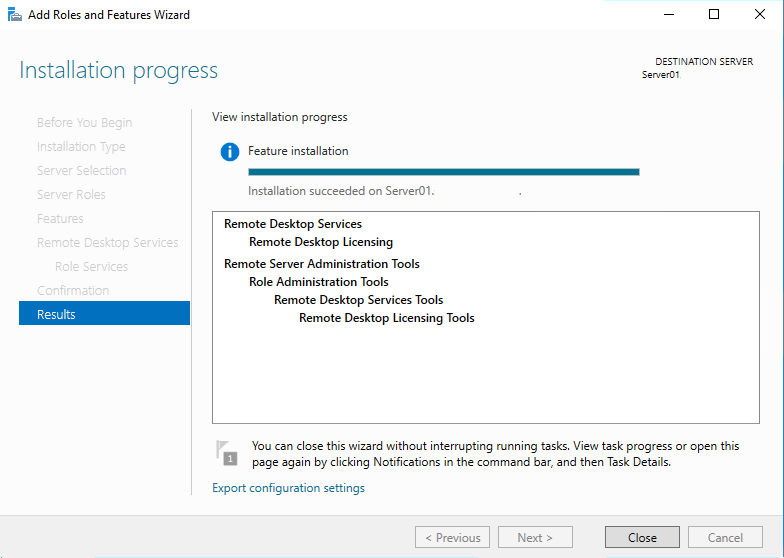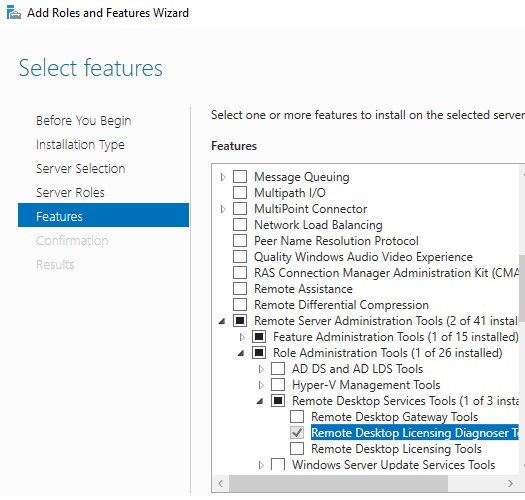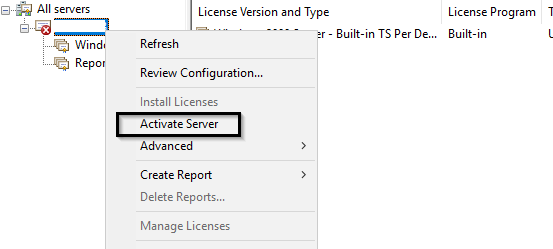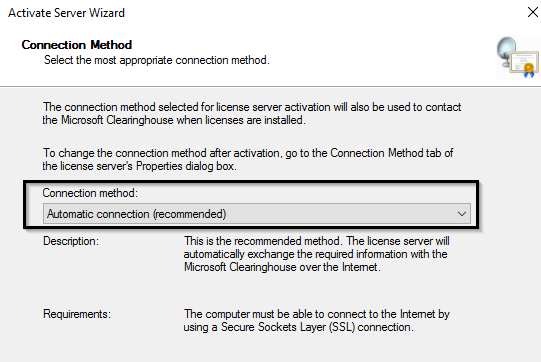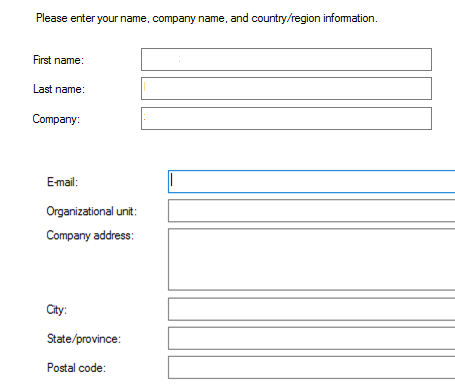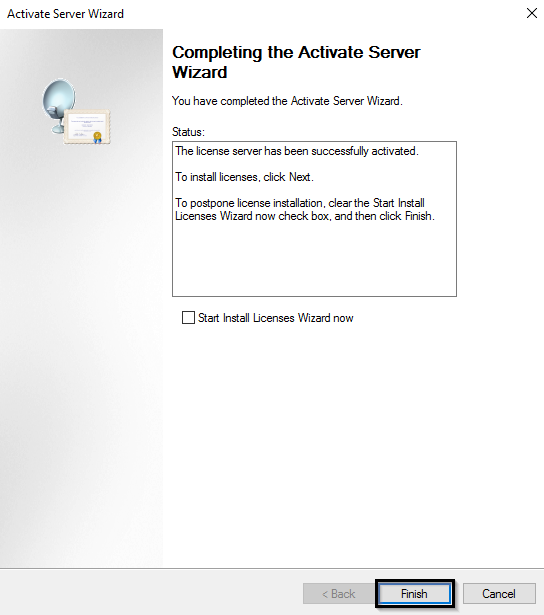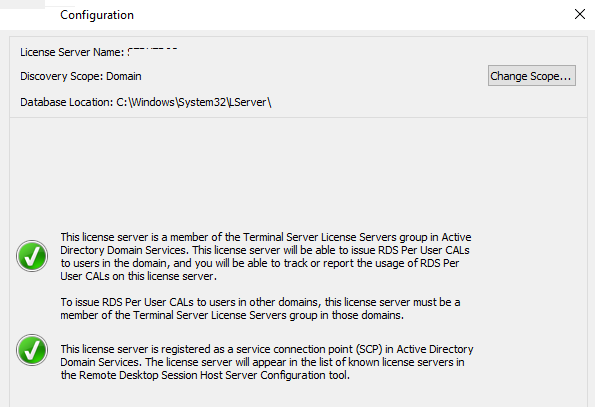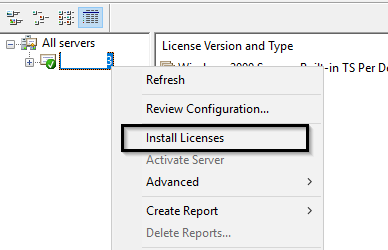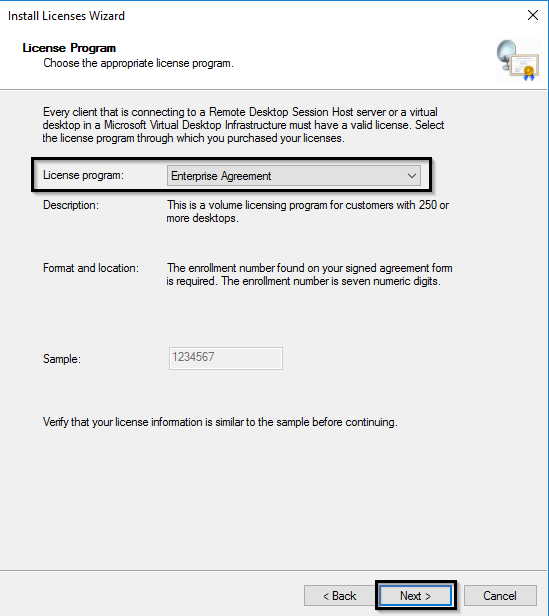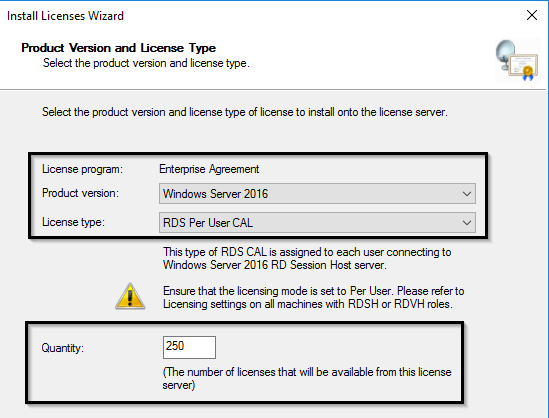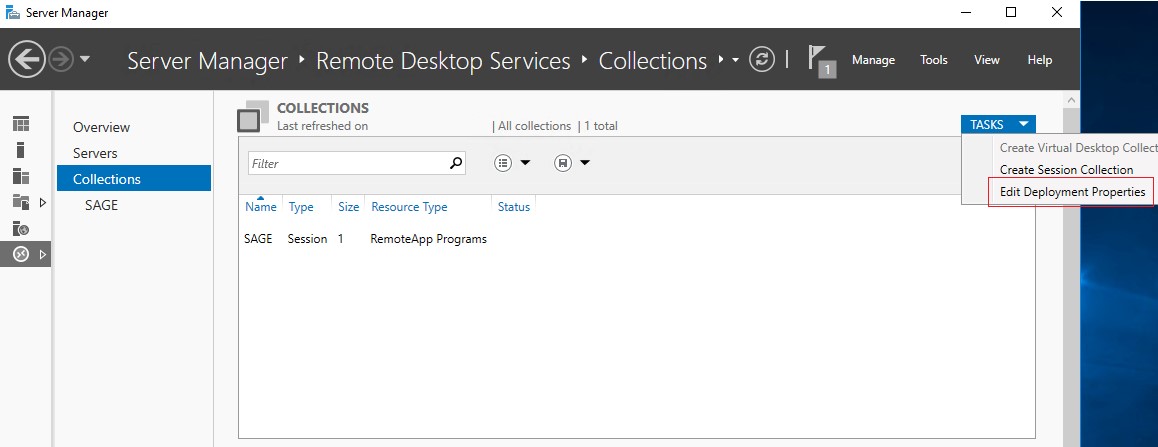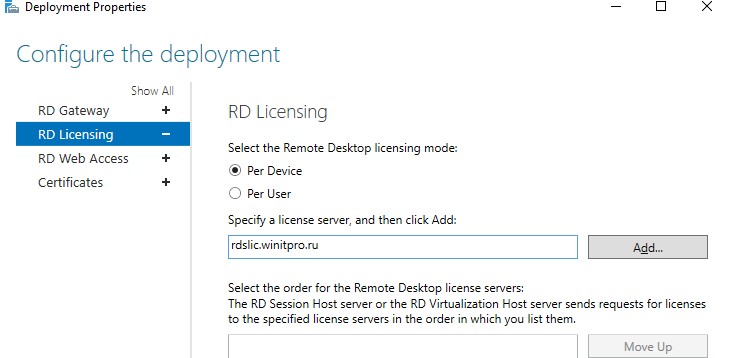- License your RDS deployment with client access licenses (CALs)
- Understanding the RDS CAL model
- RDS CAL version compatibility
- Migrate your Remote Desktop Services Client Access Licenses (RDS CALs)
- Establish RDS CAL migration method
- Migrate RDS CALs
- Automatic connection method
- Using a web browser
- Using a telephone
- Установка и активация сервера лицензирования RDS на Windows Server 2019/2016
- Установка роли Remote Desktop Licensing в Windows Server 2019/2016
- Активация сервера лицензий RDS в Windows Server
- Типы клиентских терминальных лицензий (RDS CAL)
- Установка клиентских лицензий RDS CAL в Windows Server 2016/2019
- Удаление RDS CAL с сервера лицензирования
- Настройка сервера лицензий на серверах RD Session Host
License your RDS deployment with client access licenses (CALs)
Applies to: Windows Server (Semi-Annual Channel), Windows Server 2019, Windows Server 2016
Each user and device that connects to a Remote Desktop Session host needs a client access license (CAL). You use RD Licensing to install, issue, and track RDS CALs.
When a user or a device connects to an RDВ Session Host server, the RDВ Session Host server determines if an RDSВ CAL is needed. The RDВ Session Host server then requests an RDSВ CAL from the Remote Desktop license server. If an appropriate RDSВ CAL is available from a license server, the RDSВ CAL is issued to the client, and the client is able to connect to the RDВ Session Host server and from there to the desktop or apps they’re trying to use.
There is a licensing grace period of 120 Days during which no license server is required. Once the grace period ends, clients must have a valid RDSВ CAL issued by a license server before they can log on to an RDВ Session Host server.
Use the following information to learn about how client access licensing works in Remote Desktop Services and to deploy and manage your licenses:
Understanding the RDS CAL model
There are two types of RDS CALs:
- RDS Per Device CALs
- RDS Per User CALs
The following table outlines the differences between the two types of CALs:
| Per Device | Per User |
|---|---|
| RDS CALs are physically assigned to each device. | RDS CALs are assigned to a user in Active Directory. |
| RDS CALs are tracked by the license server. | RDS CALs are tracked by the license server. |
| RDS CALs can be tracked regardless of Active Directory membership. | RDS CALs cannot be tracked within a workgroup. |
| You can revoke up to 20% of RDS CALs. | You cannot revoke any RDS CALs. |
| Temporary RDS CALs are valid for 52–89 days. | Temporary RDS CALs are not available. |
| RDS CALs cannot be overallocated. | RDS CALs can be overallocated (in breach of the Remote Desktop licensing agreement). |
When you use the Per Device model, a temporary license is issued the first time a device connects to the RD Session Host. The second time that device connects, as long as the license server is activated and there are available RDS CALs, the license server issues a permanent RDS Per Device CAL.
When you use the Per User model, licensing is not enforced and each user is granted a license to connect to an RD Session Host from any number of devices. The license server issues licenses from the available RDS CAL pool or the Over-Used RDS CAL pool. It’s your responsibility to ensure that all of your users have a valid license and zero Over-Used CALs—otherwise, you’re in violation of the Remote Desktop Services license terms.
An example of where one would use the Per Device model would be in an environment where there are two or more shifts using the same computers to access the RD Session Host(s). The Per User model would be best for environments where users have their own dedicated Windows device to access the RD Session Host(s).
To ensure you are in compliance with the Remote Desktop Services license terms, track the number of RDS Per User CALs used in your organization and be sure to have enough RDS Per User CALs installed on the license server for all of your users.
You can use the Remote Desktop Licensing Manager to track and generate reports on RDS Per User CALs.
RDS CAL version compatibility
The RDS CAL for your users or devices must be compatible with the version of Windows Server that the user or device is connecting to. You can’t use RDS CALs for earlier versions to access later versions of Windows Server, but you can use later versions of RDS CALs to access earlier versions of Windows Server. For example, an RDS 2016 CAL or higher is required to connect to a Windows Server 2016 RD Session Host, while an RDS 2012 CAL or higher is required to connect to a Windows Server 2012 R2 RD Session Host.
The following table shows which RDS CAL and RD Session Host versions are compatible with each other.
| RDS 2008 R2 and earlier CAL | RDS 2012 CAL | RDS 2016 CAL | RDS 2019 CAL | |
|---|---|---|---|---|
| 2008, 2008 R2 session host | Yes | Yes | Yes | Yes |
| 2012 session host | No | Yes | Yes | Yes |
| 2012 R2 session host | No | Yes | Yes | Yes |
| 2016 session host | No | No | Yes | Yes |
| 2019 session host | No | No | No | Yes |
You must install your RDS CAL on a compatible RD license server. Any RDS license server can host licenses from all previous versions of Remote Desktop Services and the current version of Remote Desktop Services. For example, a Windows Server 2016 RDS license server can host licenses from all previous versions of RDS, while a Windows Server 2012 R2 RDS license server can only host licenses up to Windows Server 2012 R2.
The following table shows which RDS CAL and license server versions are compatible with each other.
Migrate your Remote Desktop Services Client Access Licenses (RDS CALs)
You have three options to migrate your RDS CALs:
- Automatic connection method: This recommended method communicates via internet directly to the Microsoft Clearinghouse outbound over TCP port 443.
- Using a web browser: This method allows migration when the server running the Remote Desktop Licensing Manager tool does not have internet connectivity, but the administrator has internet connectivity on a separate device. The URL for the Web migration method is displayed in the Manage RDSВ CALs Wizard.
- Using a telephone: This method allows the administrator to complete the migration process over the phone with a Microsoft representative. The appropriate telephone number is determined by the country/region that you chose in the Activate Server Wizard and is displayed in the Manage RDSВ CALs Wizard.
In this article, the Establish RDS CAL migration method highlights the general steps common across any RDS CAL migration method, while Migrate RDS CALs highlights the steps specific to each migration method.
Regardless of migration method, you must, at a minimum, be a member of the local Administrators group to perform the migration steps.
Establish RDS CAL migration method
- On the license server, open Remote Desktop Licensing Manager. (Click Start > Administrative Tools. Enter the Remote Desktop Services directory, and launch Remote Desktop Licensing Manager.)
- Verify the connection method for the Remote Desktop license server: right-click the license server to which you want to migrate the RDSВ CALs, and then click Properties. On the Connection Method tab, verify the Connection method — you can change it in the dropdown menu. Click OK.
- Right-click the license server to which you want to migrate the RDSВ CALs, and then click Manage RDS CALs.
- Follow the steps in the wizard to the Action Selection page. Click Migrate RDSВ CALs from another license server to this license server.
- Choose the reason for migrating the RDSВ CALs, and then click Next. You have the following choices:
- The source license server is being replaced by this license server.
- The source license server is no longer functioning.
- The next page in the wizard depends on the migration reason that you chose.
If you chose The source license server is being replaced by this license server as the reason for migrating the RDSВ CALs, the Source License Server Information page is displayed.
On the Source License Server Information page, enter the name or IP address of the source license server.
If the source license server is available on the network, click Next. The wizard contacts the source license server. If the source license server is running an operating system earlier than Windows ServerВ 2008В R2 or the source license server is deactivated, you are reminded that you must remove the RDSВ CALs manually from the source license server after the wizard has completed. After you confirm that you understand this requirement, the Obtain Client License Key Pack page appears.
If the source license server is not available on the network, select The specified source license server is not available on the network. Specify the operating system that the source license server is running, and then provide the license server ID for the source license server. After you click Next, you are reminded that you must remove the RDSВ CALs manually from the source license server after the wizard has completed. After you confirm that you understand this requirement, the Obtain Client License Key Pack page appears.
If you chose The source license server is no longer functioning as the reason for migrating the RDSВ CALs, you are reminded that you must remove the RDSВ CALs manually from the source license server after the wizard has completed. After you confirm that you understand this requirement, the Obtain Client License Key Pack page appears.
The next step is to migrate the CALs — use the information below to complete the wizard. Note that what you see in the wizard depends on the connection method you identified in Step 2 above.
Migrate RDS CALs
There are three mechanisms to migrate licenses to the destination license server; continue the steps corresponding to the Connection method verified in Step 2:
Automatic connection method
- On the License Program page, select the appropriate program through which you purchased your RDSВ CALs, then click Next.
- Enter the required information (typically a license code or an agreement number, depending on the License program), and then click Next. Consult the documentation provided when you purchased your RDSВ CALs.
- Select the appropriate product version, license type, and quantity of RDSВ CALs for your environment based on your RDSВ CAL purchase agreement, and then click Next.
- The Microsoft Clearinghouse is automatically contacted and processes your request. The RDSВ CALs are then migrated onto the license server.
- Click Finish to complete the RDS CAL migration process.
Using a web browser
On the Obtain Client License Key Pack page, click the hyperlink to connect to the Remote Desktop Services Licensing Web site. If you are running Remote Desktop Licensing Manager on a computer that does not have Internet connectivity, note the address for the Remote Desktop Services Licensing Web site, and then connect to the Web site from a computer that has Internet connectivity.
On the Remote Desktop Services Licensing Web page, under Select Option, select Manage CALs, and then click Next.
Provide the following required information, then click Next:
- Target License Server ID:В A 35-digit number, in groups of 5 numerals, which is displayed on the Obtain Client License Key Pack page in the Manage RDSВ CALs Wizard.
- Reason for recovery:В Choose the reason for migrating the RDSВ CALs.
- License Program:В Choose the program through which you purchased your RDSВ CALs.
Provide the following required information, then click Next:
Last name or surname
First name or given name
You can also provide the optional information requested, such as company address, e-mail address, and phone number. In the organizational unit field, you can describe the unit within your organization that this license server serves.
The License Program that you selected on the previous page determines what information you need to provide on the next page. In most cases, you must provide either a license code or an agreement number. Consult the documentation provided when you purchased your RDSВ CALs. In addition, you need to specify which type of RDSВ CAL and the quantity that you want to migrate to the license server.
After you have entered the required information, click Next.
Verify that all of the information that you have entered is correct, then click Next to submit your request to the Microsoft Clearinghouse. The web page then displays a license key pack ID generated by the Microsoft Clearinghouse.
Keep a copy of the license key pack ID. Having this information with you facilitates communications with the Microsoft Clearinghouse, should you need assistance with recovering RDSВ CALs.
On the same Obtain Client License Key Pack page, enter the license key pack ID, and then click Next to migrate the RDS CALs to your license server.
Click Finish to complete the RDS CAL migration process.
Using a telephone
On the Obtain Client License Key Pack page, use the displayed telephone number to call the Microsoft Clearinghouse. Give the representative your Remote Desktop license server ID and the required information for the licensing program through which you purchased your RDSВ CALs. The representative then processes your request to migrate the RDSВ CALs, and gives you a unique ID for the RDSВ CALs. This unique ID is referred to as the license key pack ID.
Keep a copy of the license key pack ID. Having this information with you facilitates communications with the Microsoft Clearinghouse should you need assistance with recovering RDSВ CALs.
On the same Obtain Client License Key Pack page, enter the license key pack ID, and then click Next to migrate the RDS CALs to your license server.
Click Finish to complete the RDS CAL migration process.
Установка и активация сервера лицензирования RDS на Windows Server 2019/2016
В это статье мы рассмотрим процесс установки, настройки и активации роли сервера лицензирования удаленных рабочих столов (Remote Desktop Licensing) на базе Windows Server 2016 или 2019, а также процедуру установки и активации клиентских терминальных (CAL).
Напомню, что после установки роли терминального сервера Remote Desktop Session Host, пользователи могут использовать его только в течении пробного периода 120 дней, после окончания которого возможность подключения к удаленному RDS серверу пропадает. Согласно схеме лицензирования Microsoft, все пользователи или устройства, использующие возможности RDS, должны быть лицензированы. Для учета и выдачи терминальных лицензий (RDS CAL) существует отдельная роли в службе RDS — Remote Desktop License Server.
Установка роли Remote Desktop Licensing в Windows Server 2019/2016
Вы можете развернуть компонент Remote Desktop License на любом сервере домена, не обязательно устанавливать его на одном из серверов фермы RDSH.
Переда началом установки сервера лицензирования RDS нужно добавить (или убедиться, что у вас есть право на добавление) нового сервера в доменную группу Terminal Server License Servers, иначе сервер не сможет выдать CAL типа RDS Per User пользователям домена.
Установить службу Remote Desktop Licensing можно через консоль Server Manager. Для этого в мастере Add Roles and Features выберите роль Remote Desktop Services.
В качестве компонента роли нужно выбрать службу Remote Desktop Licensing.
Осталось дождаться окончания установки роли.
Дополнительно установите утилиту для диагностики проблем лицензирования на серверах RDS — Remote Desktop Licensing Diagnoser (lsdiag.msc), которую можно установить с помощью Server Manager: Features -> Remote Server Administration Tools -> Role Administration Tools -> Remote Desktop Services Tools -> Remote Desktop Licensing Diagnoser Tools (по умолчанию при установке службы RDS-Licensing устанавливается только консоль Remote Desktop Licensing Manager — licmgr.exe).
Также вы можете установить компонент лицензирования RDS и RD Licensing Diagnoser с помощью PowerShell:
Install-WindowsFeature RDS-Licensing –IncludeAllSubFeature -IncludeManagementTools
Активация сервера лицензий RDS в Windows Server
Чтобы сервер лицензирования RDS мог выдавать лицензии клиентам, его необходимо активировать. Для этого, откройте консоль Remote Desktop Licensing Manager (licmgr.exe), щелкните ПКМ по имени вашего сервера и выберите пункт меню Activate Server.
Запустится мастер активации сервера лицензирования RDS, в котором нужно будет выбрать желаемый метод активации. Если ваш сервер имеет доступ в Интернет, он может автоматически подключиться к серверам Microsoft. Если доступа в интернет с сервера нет, можно активировать сервер через веб браузер или по телефону.
Далее нужно будет заполнить ряд информации о вашей организации (часть полей является обязательными).
Осталось нажать кнопку Finish.
Теперь, если в консоли щелкнуть ПКМ по имени сервера и выбрать пункт Review Configuration, можно убедится что данный сервер лицензий RDS является активированным и может быть использован для активации RDS клиентов в домене.
Типы клиентских терминальных лицензий (RDS CAL)
Каждый пользователь или устройство, которое подключается к серверам Remote Desktop Session должно иметь клиентскую лицензию (CAL — client access license). Есть два типа терминальных CAL.
- На устройство (Per Device CAL) – это постоянный тип лицензии, назначающаяся компьютеру или устройству, которое подключается к RDS серверу более одного раза (при первом подключении устройства ему выдается временная лицензия). Данные лицензии не являются конкурентными, т.е. если у вас 10 лицензий Per Device, то к вашему RDS серверу смогут подключится всего 10 хостов.
- На пользователя (Per User CAL) – такой тип лицензии позволяет одному пользователю подключаться к серверу RDS с любого количества компьютеров/устройств. Данный тип лицензий привязывается к пользователю Active Directory, но выдается не навсегда, а на определенный период времени (90 дней по-умолчанию).
Установка клиентских лицензий RDS CAL в Windows Server 2016/2019
Теперь на сервер лицензирования нужно установить приобретенный пакет терминальных лицензий (RDS CAL).
В консоли Remote Desktop Licensing Manager щелкните ПКМ по серверу и выберите Install Licenses.
Выберите способ активации (автоматически, через веб или по телефону) и программу лицензирования (в нашем случае Enterprise Agreement).
Следующие шаги мастера зависят от того, какой тип лицензирования выбран. В случае Enterprise Agreement нужно указать его номер. Если выбран тип лицензирования License Pack (Retail Purchase), нужно будет указать 25-символьный ключ продукта, полученный от Microsoft.
Тип продукта (Windows Server 2016/2019), тип лицензии (RDS Per user CAL) и количество лицензий, которые нужно установить на сервере.
После этого, сервер может выдавать лицензии (RDS CAL) клиентам.
Вы можете сконвертировать RDS лицензии User CAL в Device CAL (и наоборот) с помощью контекстного меню Convert Licenses в консоли RD Licensing Manager.
Если у вас закончились свободные лицензии, вы можете отозвать ранее выданные лицензии RDS Device CAL для неактивных компьютеров с помощью следующего скрипт PowerShell:
$RevokedPCName=”msk-pc2332”
$licensepacks = Get-WmiObject win32_tslicensekeypack | where <($_.keypacktype -ne 0) -and ($_.keypacktype -ne 4) -and ($_.keypacktype -ne 6)>
$licensepacks.TotalLicenses
$TSLicensesAssigned = gwmi win32_tsissuedlicense | where <$_.licensestatus -eq 2>
$RevokePC = $TSLicensesAssigned | ? sIssuedToComputer -EQ $RevokedPCName
Удаление RDS CAL с сервера лицензирования
Если вы хотите перенести свой набор лицензий RDS CAL с одного сервера лицензирования Remote Desktop на другой, вы можете удалить установленные лицензии с сервера лицензирования с помощью PowerShell.
С помощью следующего командлета вы можете вывести список установленных пакетов RDS лицензий на сервере:
Get-WmiObject Win32_TSLicenseKeyPack|select-object KeyPackId,ProductVersion,TypeAndModel,AvailableLicenses,IssuedLicenses |ft
Найдите значение KeyPackId для пакета RDS CAL, который нужно удалить и выполите команду:
wmic /namespace:\\root\CIMV2 PATH Win32_TSLicenseKeyPack CALL UninstallLicenseKeyPackWithId KEYPACKID
Также вы можете полностью удалить все наборы CAL, пересоздав базу лицензий RDS. Для этого остановите службу Remote Desktop Licensing:
Переименуйте файл C:\Windows\System32\lserver\TLSLic.edb в C:\Windows\System32\lserver\TLSLic.bak и запустите службу:
После этого все RDS CAL лицензии будут удалены, и вы должны активировать их заново.
Настройка сервера лицензий на серверах RD Session Host
После того, как служба сервера лицензирования RDS запущена и активирована, можно перенастроить терминальные сервера RD Session Host на получение лицензий с данного сервера. Выбрать тип лицензий и указать имя терминального сервера из графического интерфейса Server Manager, с помощью PowerShell или групповой политики.
Чтобы изменить адрес сервера лицензирования на хосте RDS, откройте Server Manager -> Remote Desktop Services -> Collections. В правом верхнем меню “Tasks” выберите “Edit Deployment Properties”.
В настройках перейдите на вкладку RD Licensing, выберите тип лицензирования (Select the Remote Desktop licensing mode) и сервер RDS лицензий (Specify a license server). Нажмите Add -> Ok.
Вы можете изменить адрес сервера лицензирования RDS и тип CAL с помощью PowerShell:
$obj = gwmi -namespace «Root/CIMV2/TerminalServices» Win32_TerminalServiceSetting
Затем укажите желаемый тип лицензирования:
Теперь можно указать имя сервера лицензирования RDS:
И проверить настройки:
При настройке через GPO, нужно создать новую GPO и назначить ее на OU с RDS серверами (либо вы можете указать имя сервера лицензирования RDS с помощью локального редактора групповых политик – gpedit.msc). Настройки лицензирования задаются в разделе: Computer Configuration -> Policies -> Admin Templates -> Windows Components -> Remote Desktop Services -> Remote Desktop Session Host -> Licensing.
В этом разделе имеется 2 интересующие нас политики:
- Use the specified Remote Desktop license servers – здесь указывается адрес сервера лицензирования RDS;
- Set the Remote Desktop licensing mode – выбор метода лицензирования (типа клиентских лицензий – RDS CAL).
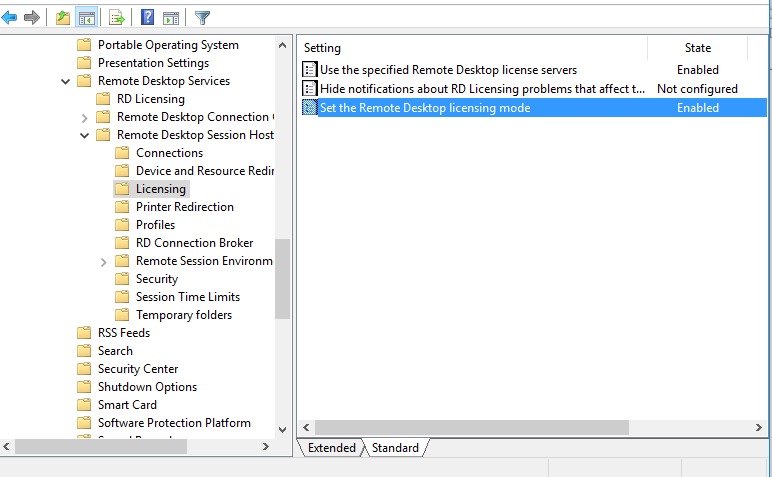
- TCP/135 (Microsoft RPC)
- UDP/137 (NetBIOS Datagram Service)
- UDP/138 (NetBIOS Name Resolutio)
- TCP/139 (NetBIOS Session Service)
- TCP/445 (SMB)
- TCP 49152 – 65535 — RPC динамический диапазон адресов
Вы можете проверить доступность портов с помощью утилиты PortQry либо командлета Test-NetConnection.
Проверить статус сервера лицензий и количество выданных лицензий можно с помощью консоли RD Licensing Diagnoser.
Если предупреждений нет, и вы видите сообщение «RD Licensing Diagnoser did not identify any licensing problems for the Remote Desktop Session Host server«, значит RDSH сервер может получать лицензии RDS CAL для пользователей.
